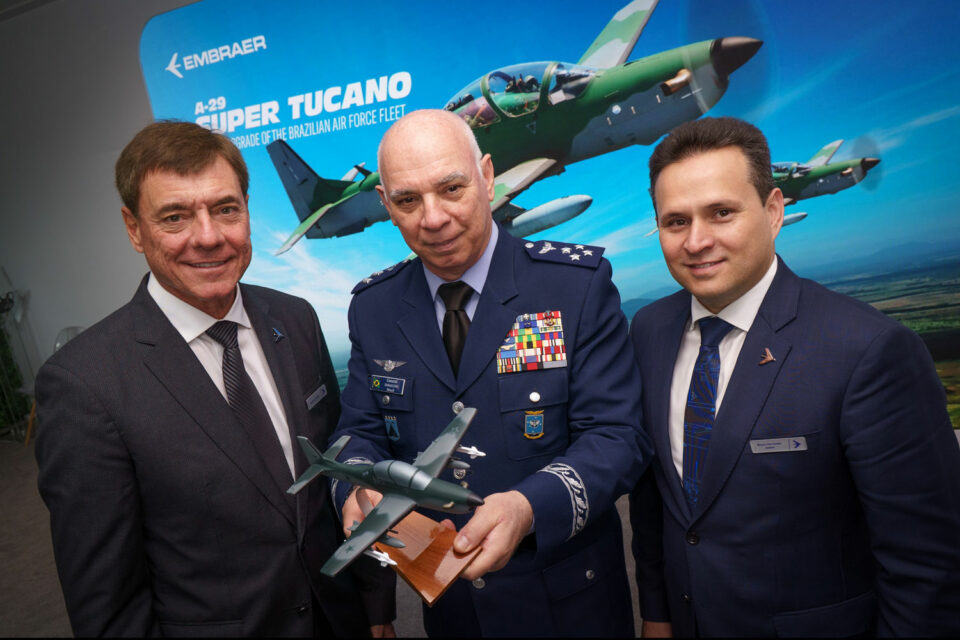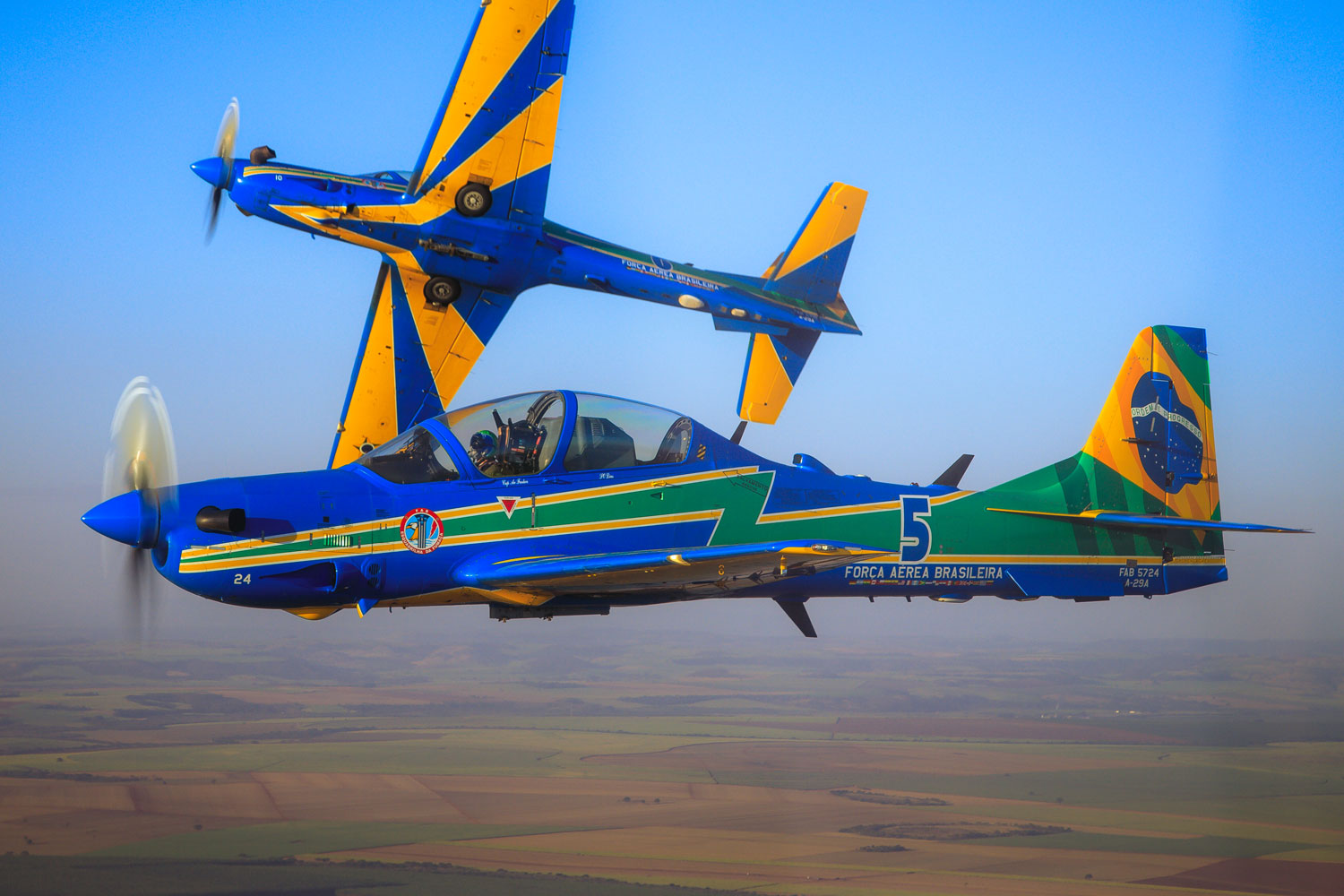Embraer and the Brazilian Air Force (FAB) announced on Monday during the Paris Air Show International that they had begun studies to update the fleet of A-29 Super Tucano aircraft.
In service in Brazil for almost 20 years, the Super Tucano is used in aerial interception and surveillance missions. The plane also serves in the advanced training of fighter pilots, in addition to being used by the Air Demonstration Squadron of the FAB.
The planned upgrade for the A-29 is a Midlife Upgrade (MLU) with requirements that will be defined by the FAB.
Most popular posts
[wpp range=’last24hours’ wpp thumbnail_width=100 thumbnail_height=75 limit=3 stats_views=0 order_by=’views’]
“The Brazilian Air Force will be able to count on the extensive list of updates implemented throughout the life of the aircraft, which have kept the platform technologically up to date without impacting the low operating cost,” said Bosco da Costa Junior, President and CEO of Embraer Defense & Security.
“During the studies, if FAB assesses the need for new functionality and capabilities that have not yet been developed, it is possible for Embraer to develop and implement on a demand basis.”

Currently, the Brazilian Air Force has a fleet of 60 Super Tucano aircraft distributed in five different squadrons, with more than 325,000 flight hours. Embraer’s attack turboprop was also exported to 15 other countries.
“Since its entry into operation in the Brazilian Air Force, the A-29 has performed with excellence the various missions for which it was designated. The proposed upgrade should allow the Air Force to maintain the modern platform and to broaden the operational use of this versatile and extremely reliable aircraft for many years to come”, said the Brazilian Air Force Commander, Lieutenant-Brigadier Marcelo Kanitz Damasceno.
Embraer says that there are some updates and improvements that were applied to the A-29 and can be adapted to Brazilian models, such as fifth-generation avionics with expandability, more modern navigation and communication systems, new types of weapons and sensors, equipment self-protection, among others.

